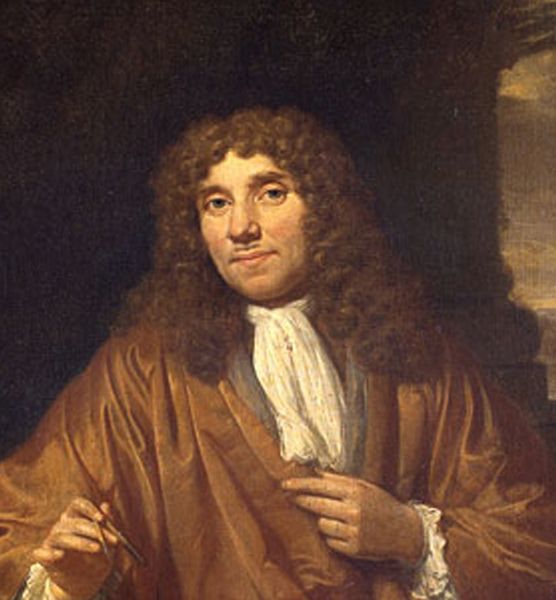Athena Review Image Archive ™
Antonie von Leeuwenhoek, portrait

Portrait of Antonie von Leeuwenhoek (after Jan Verkolje).
Antonie von Leeuwenhoek was a Dutch scientist who lived from Oct.24, 1632 - Aug.26, 1723. Starting as a draper’s assistant, von Leeuwenhoek had noticed that drapers examined cloth fibers through magnifying lens. He copied and improved these lenses, and went on to revolutionize the science of biology through use of the microscope.
Using a small, ball-like lens that could magnify up to 150 or 200 times, von Leeuwenhoek designed single-lens microscopes which enhanced the viewing light and allowed him to observe and draw previously unseen subjects thus magnified. Living in Delft, Holland as a successful tradesman, he described his findings in a series of over 100 letters to scientific friends, with drawings such as the inner components of seeds (i.e.; tiny incipient plant parts); and different layers of wood stems.
In 1674, von Leeuwenhoek was the first to describe single-celled organisms or protists, which he originally referred to as animalcules (now called microorganisms), and was also the first to record bacteria (1676), spermatozoa (1677), the blood flow in capillaries, and the banded pattern of muscle fibers (1682).
Reference:
von Leeuwenhoek, A. 1717. Letter of 1717-03-02 (AB 326 SB XXXII) to Abraham Cornelis van Bleyswyck. Royal Society of England.
Copyright © 1996-2020 Rust Family Foundation (All Rights Reserved).